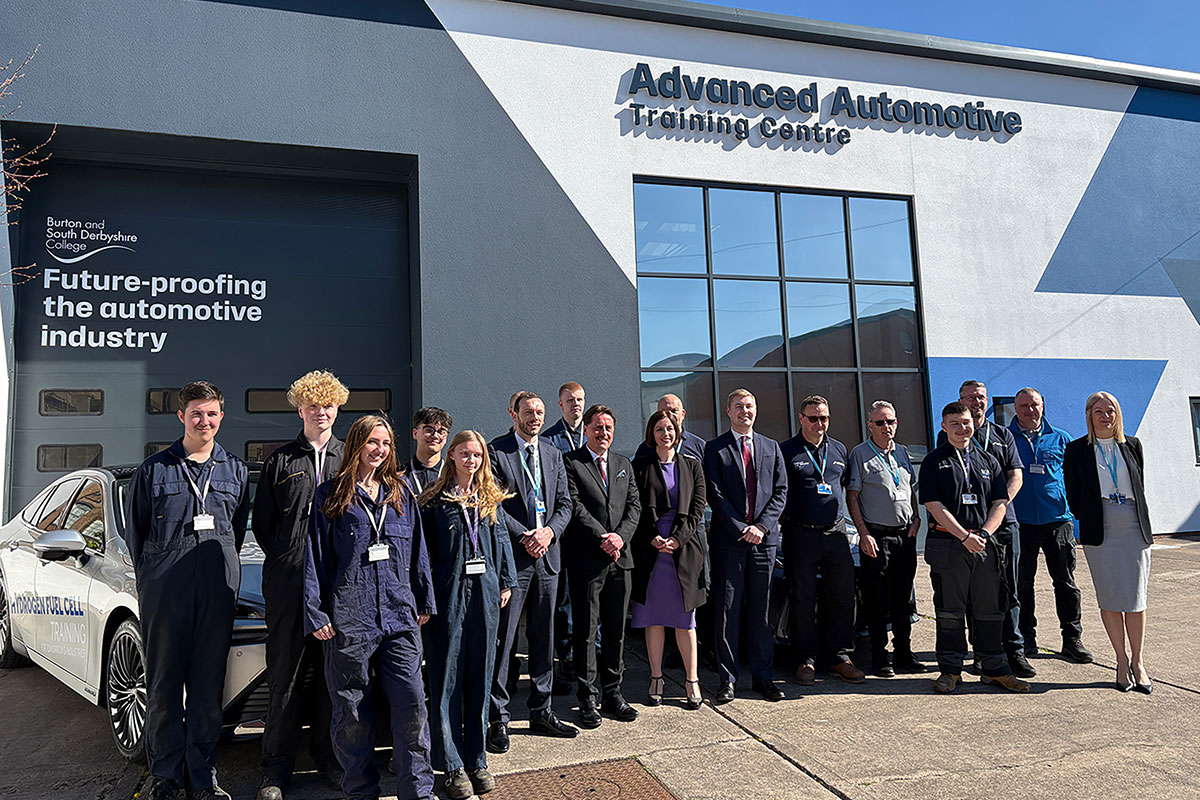Learning & Development Holds the Key to the Employee Productivity Puzzle

In today’s fast-paced business landscape, maintaining high employee engagement is essential for every company’s success. Why? Because engaged employees are more likely to deliver value and drive productivity, while ultimately supporting organisations to weather challenging economic times. Yet despite this, in the face of economic uncertainty, technological advancements and evolving work patterns, many leaders have observed a decline in employee engagement and productivity.
To many leaders, this will come as no surprise, as Learning and Development (L&D) budgets – central to the employee productivity and engagement puzzle – often face cutbacks during tough times. It’s against this backdrop that Coursera’s Chief Learning Officer, Trena Minudri, offers insights on how companies can harness the power of L&D for success.
Boosting Productivity with Greater L&D Investment
In the UK, worker productivity has been flatlining. Labour productivity data from the Office of National Statistics (ONS) shows that, while the annual percentage change in output per worker has varied considerably over the years, the trend is one of stagnation.
More positively, Coursera’s data shows that 95% of L&D and HR leaders are witnessing a significant increase in their budgets. With 45% of these leaders reporting budget hikes exceeding 10% – alongside a staggering 68% identifying upskilling as a top driving factor – it’s clear that the nation’s L&D leaders are taking proactive steps to solve the nation’s productivity puzzle.
AI Skills: Top Priority for UK Businesses
Another element influencing the productivity of the UK’s workforce is its relationship to technology. Technological progress remains rapid, meaning that more businesses are placing greater emphasis on associated skills when recruiting staff. In the UK, recruiting top digital talent remains a struggle, with even the highest-performing companies having difficulty hiring workers skilled in high-growth areas like AI, according to McKinsey.
It is therefore surprising that, globally, AI skills are ranked as lowest priority by L&D and HR leaders when asked about the scope of their L&D initiatives. Only 19% of surveyed leaders in Coursera’s Learning and Development Survey consider AI to be a top skill development priority, raising questions about the perceived urgency with which access to AI skills is being extended across workplaces.
However, in the UK, there is a notable departure from the global trend. Here, interest in AI, technology, and digital skills investment stands above the global average. Approximately 53% of L&D leaders in the UK rate these areas as their top two priorities, suggesting that UK organisations recognise the transformative potential of AI and digital skills in driving future growth, competitiveness, and innovation.
So, what can we glean from these findings, and how can organisations unlock the full potential of learning to drive employee engagement and productivity?
Reimagine L&D Priorities:
There’s a clear need for organisations to reassess their L&D priorities. While AI skills might not be the top priority for many leaders, they must consider the evolving nature of work. AI, automation, and digital transformation are shaping the future of industries. Recent University of Pennsylvania research suggests that up to 49% of workers could have half or more of their tasks exposed to large language models. Equipping employees with the right skills needed to adapt and thrive in this changing landscape should be a business priority.
For example, recognising that a working knowledge of generative AI is becoming increasingly important for all workers – not just those in front-facing technology roles – we recently launched the entry-level Generative AI for Everyone course. This offers employees the opportunity to understand and apply fundamental Generative AI principles in as few as six hours, offered by DeepLearning.AI leader and Coursera co-founder Andrew Ng.
Adapt Your L&D Model:
The UK’s unique perspective on AI, technology, and digital skills investment offers a valuable example for organisations worldwide, underscoring the importance of staying ahead in a tech-driven world. While this perspective helps to reiterate the increasing premium that should be placed upon AI skills, companies should also weave in the specific needs and opportunities in their regions and industries when setting L&D priorities. A fit-for-purpose L&D strategy requires more than just AI skills! Providing customised course combinations can ensure that your employees receive optimised access to the skills they need to excel in their work.
For example, to ensure that their employees were optimally prepared to tap into the latest technologies, minds, and medical advances to rethink medicine and improve lives, Sanofi sought to offer an L&D program that combined urgently-needed technical skills with leadership and time management skills.
Top courses undertaken by Sanofi’s employees included Excel Fundamentals for Data Analysis (Macquarie University), Work Smarter, Not Harder: Time Management for Personal & Professional Productivity (University of California, Irvine), and Foundations: Data, Data Everywhere (Google). L&D strategies that offer access to a combination of digital and human skills offers the highest opportunity for increased productivity and competitiveness.
Innovation and Adaptation:
Understand that investments in employee development are investments in the future. In today’s dynamic environment, organisations must foster a culture of innovation, agility, and continuous learning. L&D programmes should be adaptive and responsive to changing needs. Encouraging a lifelong learning mindset among employees – offering them access to short flexible, accessible courses that allow them to upskill at speed, and at scale across your organisation – will lead to better engagement and productivity.
A willingness to innovate and adapt – both at the organisational and employee level – is particularly important in a world in which the skills landscape is changing rapidly. Not all skill sets offer the same return on investment or longevity, or require equal time for acquisition. Seeking to offer L&D leaders more insight into which skills perform best across this intersection, we worked with The Burning Glass Institute to compile the Coursera Skills Compass Report, dividing key digital and human skills into a range of categories – from those that pay quick dividends, to those that are more enduring.
By constantly accounting for time-to-skill, skill value, and skill longevity when creating a skills strategy, organisations will be better-prepared to efficiently target those skills that perform best across these key criteria. Doing so will simultaneously future-proof your employee’s skills, adapt rapidly to industry needs, and maximise return on investment.
Achieving Learning & Development for All
As we navigate the challenges of a rapidly changing business landscape, investing in L&D is not just a luxury but a strategic imperative. Investing in employees’ engagement not only boosts productivity but also organisational happiness. As we look ahead, take the lead in shaping the future of your organisation—invest in your employees to invest in the future.
By Trena Minudri, Chief Learning Officer, Coursera
FE News on the go…
Welcome to FE News on the go, the podcast that delivers exclusive articles from the world of further education straight to your ears.
We are experimenting with Artificial Intelligence to make our exclusive articles even more accessible while also automating the process for our team of project managers.
In each episode, our thought leaders and sector influencers will delve into the most pressing issues facing the FE sector, offering their insights and analysis on the latest news, trends, and developments.











Responses